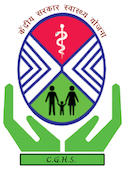Human body is mostly- connective tissue. Blood, bones, cartilages, muscles, adipose tissue and even skin. When your immune system attacks this tissue and challenges the cells- this tissue gets inflamed. These inflammatory changes all together has characteristics of three complex conditions- Lupus (SLE), Systemic Sclerosis and Polymyositis. This is rare disease as per data (you are not very much alone) but cases are increasing regularly all over the world. Body is connected with help of these
Because- all the three conditions (Lupus, Sclerosis and polymyositis) are complicated and serious that is why it leads to complex, physically challenging conditions. The tissue is widespread in the body so is the impact of the MCTD.
As the name suggests, Mixed Connective Tissue Disorder is a disease which comprises of many complex disorders, forming together. Connective Tissues are the tissues that provide a framework for the cells of the body.
Ayurveda About Mixed Connective Tissue Disorder
Many times the basic confusion is- does Ayurveda recognise any disease like this? And when it comes to the condition like MCTD this is the first question everybody asks so. It is obvious.
Ayurveda doesn’t have any disease named MCTD. Surely. Ayurveda recognises the conditions as per the pathologies. Diseases are “categorised” under a common title. One such class is- Vatarakta. This is a group of pathological process. But different doshas play different roles in this process of the disease. So everything cannot be treated just like- Vatarakta. A physician need to find out the doshas, dhatus and agni- everything.
The Vatarakta condition is about – anomalies in the vasculature (the blood supply) and the damage to the tissues because this. So is the MCTD like- SLE, Myositis and Sclerosis.
What Does Happen in MCTD
Mainly three types of activities occur in the body in case of MCTD. These are-
- Due to attack by the immune system in confusion, this disease impacts multiple organs and parts of the body. Because the immune system keeps on taking healthy tissue with this disease.
- The skin, the underlying tissue and rest of the organs not only becomes thick but also gets harder.
- The swelling of the muscles this leads to the soreness and stiffness of the muscles.
The affected ones may also suffer pain in joints such as elbow, wrist, knee and ankle for a long time.
Facts about Mixed Connective Tissue Disorder –
- Mixed Connective Tissue Disorder can happen at any age and most commonly occurs in females under the age group of 30.
- Symptoms related to this disorder are- mood swings, weight gain, high blood pressure, increase in sugar level, weakening of bones and contraction.
- Mixed connective tissue disorder is a disease that can affect the brain, as well.
- It can also lead to a disability, i.e. a condition which if occurs will make you unable to work.
Signs and Symptoms of Mixed Connective Tissue Disorder
Signs and symptoms of Mixed Connective Tissue Disorder occur suddenly, and they include the following –
- In the early stage of this disease, the body shows hardly any signs and symptoms. The patient only feel some tiredness alone. But with the progress of decay, different signs and symptoms appear.
- Different signs and symptoms starts appearing once healthy tissues starts decaying.
- Other signs include stiffness in joints, abnormalities in the heart, lungs and skin
- Common symptoms which can easily be noticed include – weakness of muscles, fever and tiredness of the body.
Other signs include the following.
- Fluid accumulation in the tissue of the hands, causing swelling and puffiness
- Reddish-brown patches in the underneath of the skin, hair loss, violet colour of the eyelids, reddish coloured spots on the knuckles, fingernails surrounded by dilation of small blood vessels.
- Improper working of the pipe that connects the mouth to its stomach.
- Leading to difficulties of breathing, i.e. lung functioning abnormalities.
- Heart & kidney related problems
- Nerves related symptoms including narrowing of the blood vessel, swelling of blood vessels, mild forms of headache, vomiting, tiredness, fever, headache, blockage of the skull, bleeding, disturbance to the sensory organs of the body.
- Low haemoglobin and less count of white blood cells in the body that disturbs the fighting ability.
- Enlargement of the liver and Intestinal involvement in few of the cases.
Causes of Mixed Connective Tissue Disorder
There might be several reasons behind the origin of Mixed Connective Tissue Disorder that is not known to us. It is a disorder that means the immune system affects the healthy cells, generally mistaken for the body to be fought.
Inheritance of Mixed Connective Tissue Disorder
The role of genes inherited is still not clear. But when it comes to the autoimmune conditions, the main focus goes to genes and it is obvious. Because these are Genes which carry all information. The information about behaviour of the cells and their attitude.
But alone genes cannot do much, because these are dependent on the diet and lifestyle. Without provocation of through the diet and lifestyle, these genes are of not bad.
Diagnosis of Mixed Connective Tissue Disorder
It is often detected after a physical examination revealed signs and symptoms associated with the condition. The most important tests are –
Anti Nuclear Antibodies (ANA) and Antibodies to Ribonucleoprotein.
Along with these- ESR and CRP are the two things which we need to check in case of the MCTD.
Statistics of Mixed Connective Tissue Disorder
- It is more commonly found in Females compared to Males.
- The ratio is 3:1, with a female to male ratio.
- The age group that is typically affected is 15-25 years old.
How does this disorder occur?
Mixed contaminated disorder can occur due to various reasons that would vary from person to person. There are a lot of factors that are responsible for the disease to occur. It is essential to observe the signs and symptoms of this disorder, as it has also been stated earlier that the condition has no cure to it. Immunity of the body plays a significant role in fighting with the disorder for not letting it happen.
- When the immune system is attacked by the body’s own tissue that results in damaging many of its organs.
- The skin, the underlying tissue and rest of the organs not only becomes thick but also gets harder.
- The swelling of the muscles.
The affected ones may also suffer pain in joints such as elbow, wrist, knee and ankle for a long time.
Ayurveda About MCTD
Ayurveda talks about two major conditions, which translates in the condition of MCTD- Aam Vata and Vata Rakta. These conditions, represent the condition, because these represent- Autoimmune conditions. In cases of MCTD, the line of treatment is mix with Vatarakta and Aam Vata. Because There are two components which are important for the treatment-
- The toxins involved in causation of the rheumatic changes in the body.
- The inflammatory changes in the vasculature of the connective tissues.
How can there be a two fold treatment approach?
Most of the diseases in Ayurveda are conditions like “syndrome”, these are not exact diseases. To make sure about the “analogy” the main thing is- similarity between “pathological” process.
In complex conditions like MCDT, this is not possible to comment on lines of single disease. Perhaps this is the reason, why modern medicines is also not able to answer this condition.
Ayurveda Treatment for MCTD
The Ayurveda treatment of MCDT is based on the approach of Vata Rakta and Aam Vata. We need to remove the toxins from the body and along with this inflammation of the arteries.
For the treatment patient of MCDT need to admit for 16 days in the first Panchakarma Session. And later on for different sessions of 8 days panchakarma patient needs to come for two or three sittings of Panchakarma.
The treatment of the MCTD goes for long, because immune system and its handling is just a complicated condition. This takes long for management of such conditions.
Please check the online consultation page to know about the details regarding, making an appointment.













